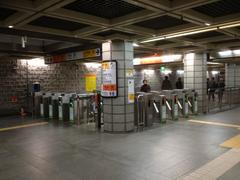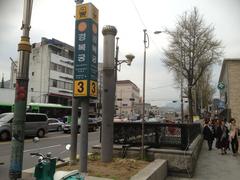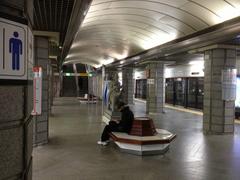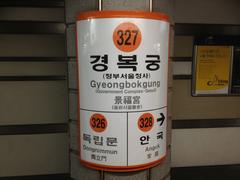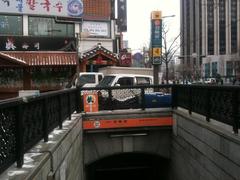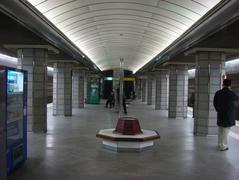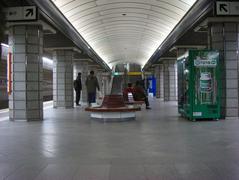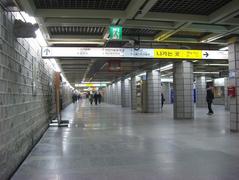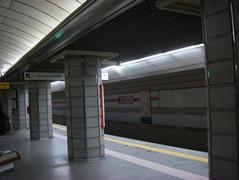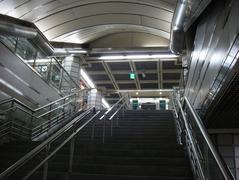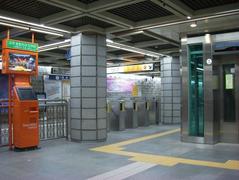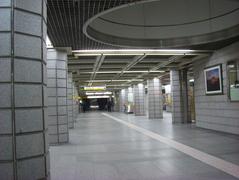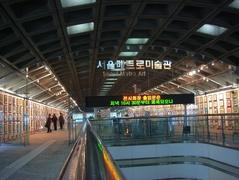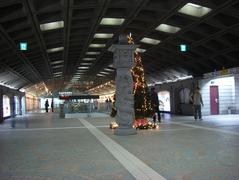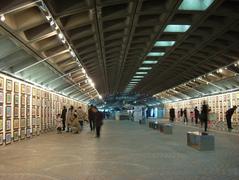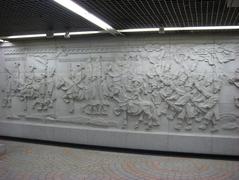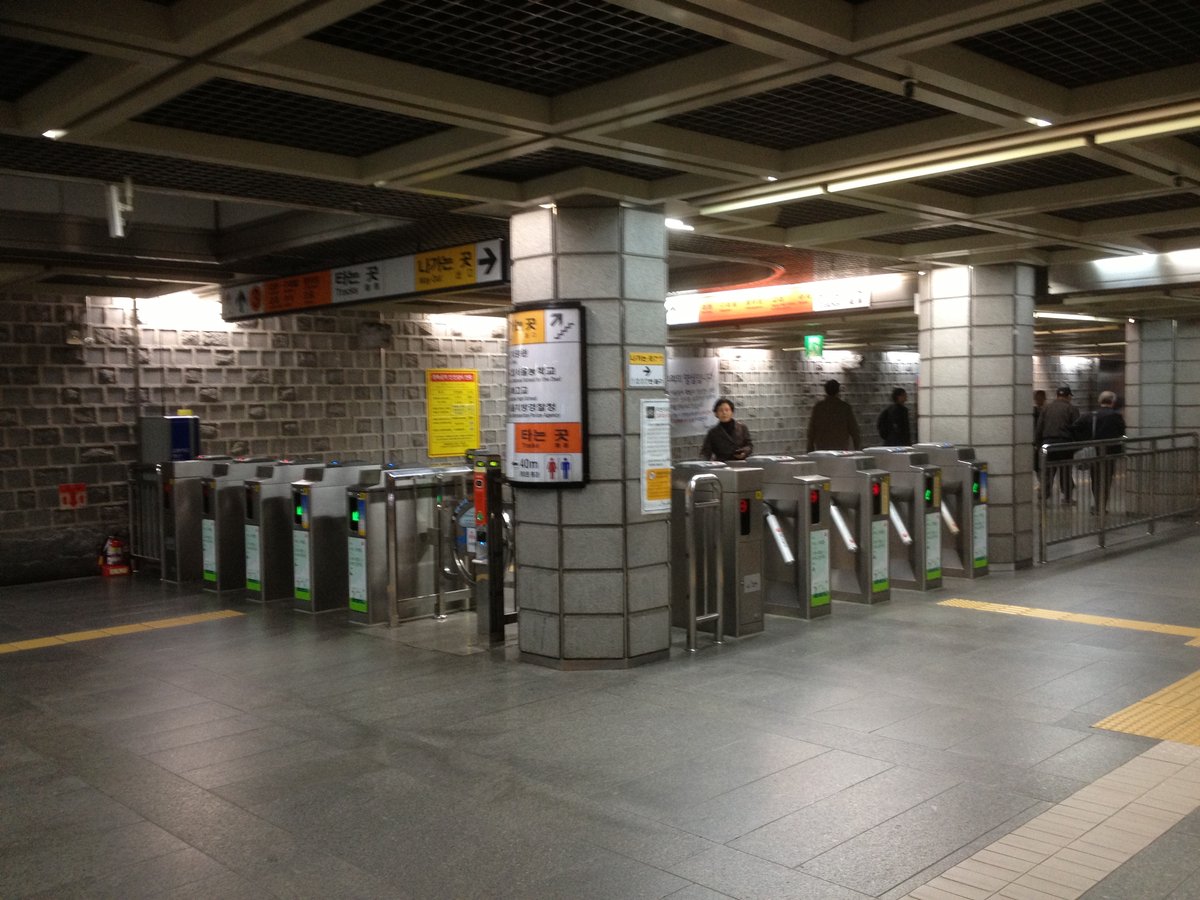
Gyeongbokgung Palace Visiting Hours, Tickets, and Seoul Historical Sites Guide
Date: 15/06/2025
Introduction
Gyeongbokgung Palace, often referred to as the “Palace Greatly Blessed by Heaven,” is the crown jewel of Seoul’s royal heritage and a must-visit for anyone interested in Korea’s history, architecture, and traditions. Established in 1395 by King Taejo, the founder of the Joseon Dynasty, Gyeongbokgung served as the heart of Korean political and cultural life for centuries. Today, the palace is celebrated for its beautifully restored architecture, immersive cultural experiences, and prime location in central Seoul. This comprehensive guide provides everything you need to plan your visit, from historical background and architectural highlights to practical information on tickets, accessibility, and nearby attractions.
For official updates and further resources, consult the Cultural Heritage Administration of Korea and Visit Seoul.
Table of Contents
- Introduction
- Origins and Historical Evolution
- Architectural Features and Layout
- Cultural Significance
- Visiting Information
- Signature Experiences & Ceremonies
- Museums and Educational Spaces
- Visitor Facilities
- Practical Tips
- Frequently Asked Questions (FAQ)
- Visuals and Media Recommendations
- Related Articles
- Conclusion
Origins and Historical Evolution
Gyeongbokgung Palace was built in 1395 and served as the principal royal residence during the Joseon Dynasty. As the largest and most prestigious of Seoul’s Five Grand Palaces, it symbolized the authority and dignity of the monarchy for over 500 years (Visit Seoul). The palace endured destruction during the late 16th-century Japanese invasions and was left in ruins for centuries. Restoration began in the 19th century under King Gojong, but further damage occurred during Japanese occupation in the early 20th century (Wundrfly). Since the 1990s, careful restoration has brought much of the palace back to its former grandeur.
Architectural Features and Layout
Gyeongbokgung’s layout reflects Confucian ideals of order, hierarchy, and harmony with nature, following Korean geomantic principles (pungsu-jiri). Key structures include:
- Gwanghwamun Gate: The imposing main entrance and site of the Royal Guard Changing Ceremony (TripnCamp).
- Geunjeongjeon Hall: The throne hall for official ceremonies and royal audiences.
- Gyeonghoeru Pavilion: A stunning two-story banquet hall on an artificial island, perfect for photography (Wundrfly).
- Hyangwonjeong Pavilion: A tranquil hexagonal structure over a lotus pond, connected by a wooden bridge.
- Gyotaejeon and Jagyeongjeon Halls: The queen’s residence and the queen dowager’s quarters, each showcasing traditional Korean architectural details.
The palace also features beautifully landscaped gardens, serene courtyards, and ancient trees that provide year-round scenic beauty.
Cultural Significance
Gyeongbokgung is more than a historical monument; it is a living symbol of Korean resilience, culture, and identity. The palace complex houses the National Palace Museum of Korea and the National Folk Museum of Korea), offering deep insights into royal life and Korean traditions. The palace grounds frequently host traditional performances, seasonal festivals, and educational programs, making it a vibrant center of cultural engagement.
Visiting Information
Opening Hours
- Spring & Autumn (March–May & September–October): 09:00–18:00 (last admission 17:00)
- Summer (June–August): 09:00–18:30 (last admission 17:30)
- Winter (November–February): 09:00–17:00 (last admission 16:00)
- Closed: Every Tuesday
(KoreaToDo; Ticket4TwoPlease)
Special Night Openings: Select dates in spring and autumn offer nighttime tours with illuminated palace views (chloestravelogue.com).
Ticket Prices
- Adults (19–64): 3,000 KRW
- Children (7–18): 1,500 KRW
- Children under 7 & Seniors 65+: Free
- Combination Ticket: 10,000 KRW (adults), 5,000 KRW (children); covers Gyeongbokgung and other major palaces, valid for 3 months (KoreaToDo)
- Hanbok Wearers: Free entry if you wear traditional Korean attire
- Online Tickets: Purchase via Cultural Heritage Administration or official platforms
How to Get There
- Subway:
- Line 3 to Gyeongbokgung Station, Exit 5 (direct access)
- Line 5 to Gwanghwamun Station, Exit 2 (7–8 min walk)
(PrepareTravelPlans; Ticket4TwoPlease)
- Bus: Multiple city routes stop nearby (including 0212, 7016, 109, 171, etc.).
- Walking: Easily accessible from nearby neighborhoods like Myeongdong.
Accessibility
- Wheelchair Access: Ramps, accessible restrooms, and wide gates available (koreajourney.com)
- Elevators/Escalators: At Gyeongbokgung Station
- Information Desks: Multilingual staff, free Wi-Fi, and mobile charging stations
- Restrooms: Multiple, including accessible facilities
- Lockers: Available at palace entrance
Best Times to Visit & Tips
- Arrive Early: Morning visits (especially on weekdays) are less crowded.
- Seasons: Spring (cherry blossoms) and autumn (foliage) are most picturesque.
- Hanbok Rental: Shops nearby; wearing hanbok grants free entry.
- Weather: Dress appropriately; palace grounds are mostly outdoors.
- Luggage Storage: Available at major transit stations.
Signature Experiences & Ceremonies
Royal Guard Changing Ceremony
- When: 10:00 AM & 2:00 PM daily (except Tuesdays)
- Where: Gwanghwamun Gate
- Duration: About 20 minutes
(KoreaToDo; travelsetu.com)
Arrive early for a good viewing spot. The ceremony features colorful traditional costumes, instruments, and reenactments of royal guard duties.
Hanbok Experience
Renting and wearing a hanbok from nearby shops immerses you in Korean culture and provides free palace admission. It’s a highlight for memorable photos (Ticket4TwoPlease).
Guided Tours
-
Free Palace Tours:
- English: 11:00, 13:30, 15:30
- Chinese: 10:30, 15:00
- Japanese: 10:00, 14:30
- Spanish: 10:30, 15:00 (Fri/Sat only)
(KoreaToDo; wherearethosemorgans.com)
-
Themed & Paid Tours: Bookable online, often including other nearby attractions and hanbok experiences (SeoulTravelPass).
Nighttime Tours
On select dates, enjoy illuminated palace tours with cultural performances. These are popular and require advance booking (chloestravelogue.com).
Museums and Educational Spaces
- National Palace Museum of Korea:
Over 40,000 royal artifacts, free admission, located within the palace grounds (travelsetu.com). - National Folk Museum of Korea:
Interactive exhibits on Korean culture and daily life, accessible from the eastern side (english.visitseoul.net).
Visitor Facilities
- Rest Areas: Benches and shaded spots throughout the grounds.
- Information Centers: Maps, brochures, and assistance in multiple languages.
- Souvenir Shops: Traditional crafts and themed gifts.
- Restrooms: Accessible and well-maintained.
- Lockers: Secure storage for personal items.
Practical Tips
- Photography: Allowed outdoors; flash/tripods prohibited indoors.
- Duration: Allocate 2–3 hours for a thorough visit, including tours and museums.
- Responsible Tourism: Respect signage, do not touch historic structures, and dispose of trash properly (KoreaTripGuide).
- Pets: Not allowed except for guide dogs.
Frequently Asked Questions (FAQ)
Q: What are the Gyeongbokgung Palace visiting hours?
A: The palace is open 09:00–18:00 in spring/autumn, until 18:30 in summer, and closes at 17:00 in winter. Closed on Tuesdays.
Q: How much are tickets?
A: Adults: 3,000 KRW; children (7–18): 1,500 KRW; free for children under 7, seniors 65+, and hanbok wearers.
Q: Are guided tours available?
A: Yes, free tours are available in multiple languages daily except Tuesdays, and paid tours can be booked online.
Q: Is the palace wheelchair accessible?
A: Yes, with ramps, accessible restrooms, and assistance at information centers.
Q: Can I wear hanbok to the palace?
A: Yes, wearing hanbok grants free admission.
Visuals and Media Recommendations
Enhance your visit by exploring virtual tours, interactive maps, and optimized images. Look for high-quality visuals of Gwanghwamun Gate, Geunjeongjeon Hall, Gyeonghoeru Pavilion, and the Changing of the Guard Ceremony with descriptive SEO alt tags such as “Gyeongbokgung Palace visiting hours” and “Seoul historical sites.”
Related Articles
Conclusion
Gyeongbokgung Palace stands as a vivid testament to Korea’s royal history, cultural depth, and architectural beauty. With restored halls, engaging ceremonies, and a host of accessible amenities, it offers an immersive experience for all visitors. Plan your journey using official resources, take advantage of guided tours and hanbok rentals, and explore nearby cultural sites for a full appreciation of Seoul’s heritage.
For the latest updates on tickets, hours, and events, always consult the Gyeongbokgung Palace official website and the Seoul Metro website. For enhanced travel planning, download the Audiala app for real-time transit updates, interactive tours, and exclusive tips.
References
- Visit Seoul - Gyeongbokgung Palace
- Wundrfly - Gyeongbokgung Palace History and Heritage
- TripnCamp - How to Visit Gyeongbokgung Palace
- PrepareTravelPlans - Gyeongbokgung Palace Visiting Guide
- Ticket4TwoPlease - Gyeongbokgung Palace Tickets and Tours
- Seoul Metro Station Info
- KoreaToDo - Gyeongbokgung Palace Travel Guide
- Chloe’s Travelogue - Gyeongbokgung Palace Changing of the Guard Guide
- Audiala - Gyeongbokgung Travel Info
- SeoulTravelPass - Gyeongbokgung Palace Walking Tour
- KoreaTripGuide - Cultural Exploration
- wherearethosemorgans.com - Visiting Gyeongbokgung Palace
- chloestravelogue.com - Nighttime Tours
- koreajourney.com - Gyeongbokgung Palace
- travelsetu.com - Gyeongbokgung Palace Things to Do
- english.visitseoul.net - Gyeongbokgung Palace Info
- k-info-all.tistory.com - Complete Guide to Visiting Gyeongbokgung Palace
- heyroseanne.com - Palaces of Seoul
